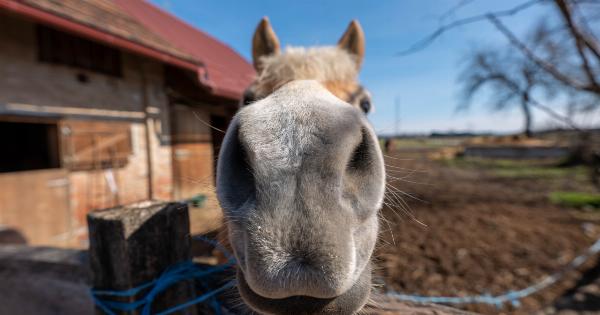Mucus production in the nose and neck is a common bodily process that helps to keep these areas moist and free from irritants.
While it may often be associated with symptoms like a runny nose or post-nasal drip, mucus actually serves several important functions in the body.
What is mucus and why is it produced?
Mucus is a slippery and viscous fluid that is produced by the mucous membranes present in the nose, throat, and other parts of the body. It is primarily composed of water, proteins, antibodies, and various other substances.
The main purpose of mucus production is to protect and lubricate the tissues in the nose and throat.
Functions of mucus in the nose and neck
1. Lubrication: Mucus acts as a lubricant, allowing for smooth movement of air and substances through the nasal passages and throat.
2. Moisturization: Mucus helps to keep the nasal passages and throat moist, preventing dryness and irritation.
3. Trapping particles: Mucus traps and captures airborne particles such as dust, allergens, bacteria, and viruses, preventing them from entering the respiratory system.
4. Defense mechanism: The immune system in our body produces antibodies that are present in mucus. These antibodies help to neutralize or eliminate pathogens, protecting us from infections.
Factors influencing mucus production
1. Allergies: Allergic reactions to substances like pollen, pet dander, or certain foods can stimulate the production of excessive mucus, resulting in nasal congestion and related symptoms.
2. Infections: Viral or bacterial infections can cause increased mucus production as the body tries to eliminate the invading pathogens.
3. Environmental factors: Exposure to dry air, pollutants, smoke, or strong odors can irritate the mucous membranes, leading to increased mucus production.
4. Hormonal changes: Hormonal fluctuations, such as those that occur during pregnancy, can affect mucus production.
Common conditions associated with excessive mucus production
1. Common cold: The common cold often causes excessive mucus production, resulting in a runny or stuffy nose.
2. Sinusitis: Inflammation of the sinuses can lead to increased mucus production, causing nasal congestion, facial pain, and post-nasal drip.
3. Allergic rhinitis: Allergies to pollen, dust mites, or pet dander can trigger excessive mucus production, leading to sneezing, itchy eyes, and a runny or congested nose.
4. Gastroesophageal reflux disease (GERD): Stomach acid that flows back into the throat can irritate the mucous membranes, leading to increased mucus production in the throat.
Managing excessive mucus production
1. Hydration: Drinking plenty of fluids can help promote thinning of mucus, making it easier to expel from the body.
2. Steam inhalation: Inhaling steam from a warm shower or a bowl of hot water can help to loosen thick mucus and provide relief from congestion.
3. Saline nasal rinses: Using a saline solution can help to irrigate and moisturize the nasal passages, reducing the thickness of mucus and clearing nasal congestion.
4. Avoiding irritants: Avoid exposure to smoke, strong odors, and other environmental irritants that can worsen mucus production.
When to seek medical advice
While mucus production is a normal bodily process, certain symptoms may indicate an underlying medical condition that requires attention. It is advisable to consult a healthcare professional if you experience:.
– Persistent and excessive mucus production lasting more than a few weeks.
– Blood in mucus.
– Breathlessness or difficulty in breathing.
– Severe facial pain or headache.
– Recurrent throat infections.
A healthcare provider can assess your symptoms and provide appropriate diagnosis and treatment.
Conclusion
Mucus production in the nose and neck is a natural and essential bodily function that helps to moisturize, protect, and defend the respiratory system.
While excessive mucus production can be bothersome, it is often a sign that the body is fighting off an infection or reacting to an irritant. By understanding the factors that influence mucus production and adopting appropriate management techniques, it is possible to alleviate symptoms and maintain nasal and throat health.































